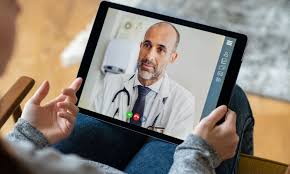Telemedicine uses communication technology to provide healthcare services remotely. Through video conferencing, secure messaging, and remote monitoring devices, it connects providers with patients who may face challenges accessing traditional in-person care. A core feature of virtual care is offering alternative pathways for medical services, which is especially valuable for individuals in rural or underserved areas. Here’s more information about the role of telemedicine in modern healthcare:
Expanding Access to Healthcare Services
Telemedicine platforms allow individuals in remote areas to connect with healthcare professionals and specialists who are not locally available. People with transportation difficulties or mobility challenges also benefit from this model. By removing the barrier of distance, telemedicine supports ongoing care and enables more frequent consultations when needed. If a patient is sick, they can schedule a virtual consultation and avoid exposing other patients. This approach makes healthcare more accessible and flexible, and it helps meet the unique needs of diverse communities.
Applying Telemedicine in Specialized and Primary Care
Virtual care has applications across a wide range of medical fields. In primary care, it supports routine check-ups, symptom reviews, and chronic disease management. Providers can evaluate images or conduct remote consultations to help determine a suitable treatment. Virtual care also allows for ongoing monitoring of chronic skin conditions, such as eczema or psoriasis, without requiring frequent in-person visits.
Women’s health practices can integrate virtual follow-ups and remote data reviews into standard care. This enables consultations for prenatal check-ins, contraceptive counseling, and postnatal support. By extending the reach of healthcare, telemedicine helps multiple specialties make services more accessible and convenient for patients.
Facilitating Remote Patient Monitoring
Remote patient monitoring presents a key telemedicine application. Digital tools, such as wearable devices, gather data including blood pressure, glucose levels, and other health signs in real time. Patients can transmit this information securely to healthcare providers for review and consultation. Ongoing monitoring helps professionals recognize trends or changes in health status earlier, allowing them to adjust management plans as circumstances evolve. Virtual methods simplify ongoing oversight; they reduce the frequency of in-person appointments while maintaining direct engagement.
Supporting Coordination Between Providers
Using telemedicine and digital collaboration tools, providers can coordinate care plans, share health records, and discuss diagnoses with other members of the care team. Primary care professionals connect with specialists quickly, consolidating recommendations and balancing treatment plans. The streamlined process of information sharing reduces duplication of tests or conflicting advice. For individuals requiring sustained management from multiple providers, this approach can strengthen the consistency and clarity of overall care.
Recognizing Limitations and Identifying Appropriate Uses
Recognizing the limits of telemedicine is key to effective healthcare delivery. Telemedicine can function well for:
- Follow-up care
- Routine management of chronic illnesses
- Medication management and prescription refills
- Patient education and preventive care guidance
- Addressing non-urgent concerns
It does not replace physical examination and procedures that require direct access to specialized equipment. Physical exams, emergency situations, and certain diagnostic processes still require in-person appointments. A helpful approach involves contemplating which aspects of care benefit from remote interaction and when face-to-face visits remain fundamental. This blend of virtual and traditional care creates a comprehensive model suited to current needs.
Ask Your Doctor About Telemedicine Services
Telemedicine offers helpful solutions that expand access and foster collaboration. Its key benefits include overcoming physical distance, supporting ongoing management, and facilitating timely interactions between individuals and providers. To gain further understanding of how telemedicine integrates with your healthcare needs, discuss its applications and benefits with a trusted provider today.














